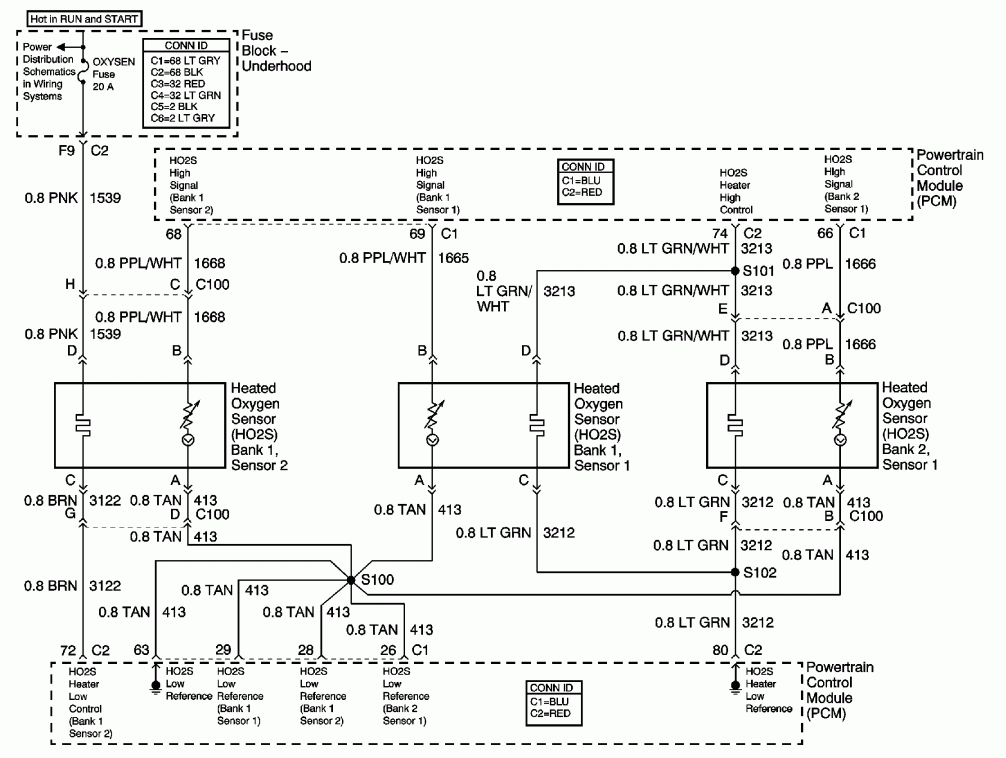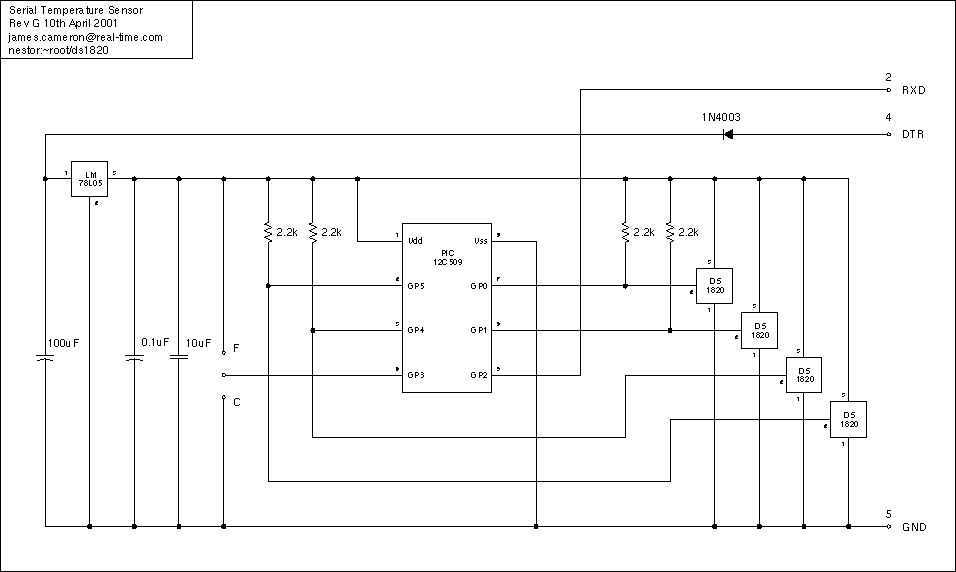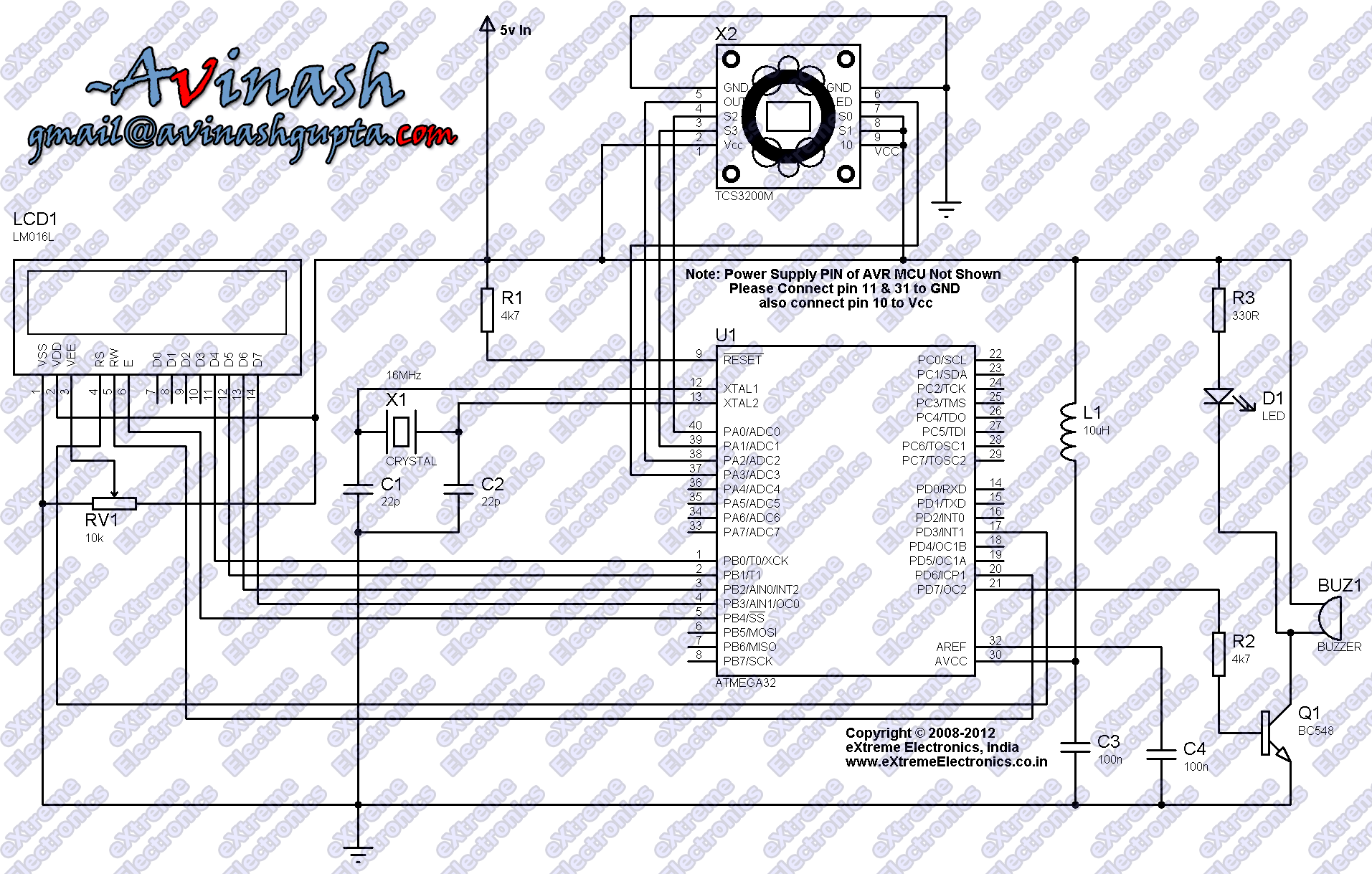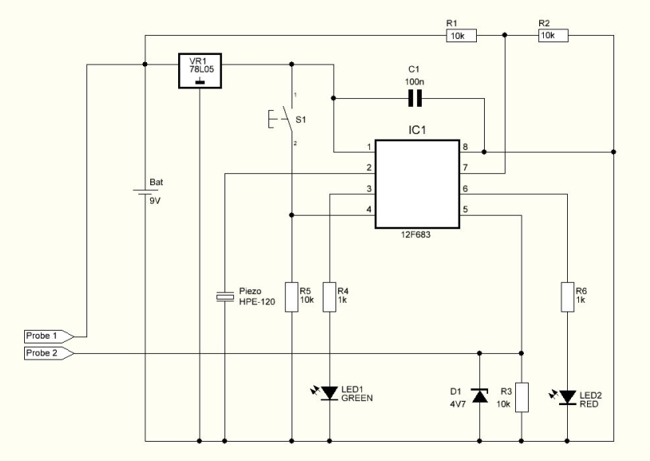
Connecting an IR Sensor

The final step involves connecting the IR LEDs, resistors, and IR receivers to the Arduino. Begin by connecting the +5V pins of the IR receivers (the right pin when facing the receiver) with red wires directly to the +5V port on the Arduino without any series resistor. Next, connect the ground pins of the IR receivers (the middle pin) to the GND port of the Arduino using black wires, ensuring they share the same bus as the cathodes of the IR LEDs. The signal pins of the IR receivers (the left pin when facing the receiver) should be connected through 220-ohm resistors to Arduino pins 7 and 8 (the right receiver to pin 7 and the left receiver to pin 8) using grey wires. Finally, connect the anodes of the IR LEDs through separate 2k-ohm resistors to port 9 using yellow wires. Verify the connections using the virtual breadboard to ensure accuracy.
The described circuit integrates IR LEDs and receivers with an Arduino microcontroller for applications such as remote control systems or obstacle detection. The circuit begins with the power supply, where the +5V from the Arduino is connected to the positive terminals of the IR receivers, providing the necessary operating voltage. The ground connections are crucial for establishing a common reference point, which is achieved by linking the ground pins of the IR receivers to the Arduino's GND.
The signal output from the IR receivers is routed through 220-ohm resistors to prevent excessive current that could damage the Arduino's input pins. The choice of 220 ohms is a standard value that balances current flow while ensuring reliable signal detection. The right receiver's output is directed to pin 7, while the left receiver's output is assigned to pin 8, allowing the Arduino to differentiate between signals from each receiver.
The IR LEDs are configured to emit infrared light when activated. Their anodes are connected through 2k-ohm resistors to port 9 of the Arduino. This resistor value is chosen to limit the current flowing through the LEDs, ensuring they operate within safe parameters while providing sufficient brightness for effective operation.
To validate the wiring and functionality of the circuit, the use of a virtual breadboard is recommended. This simulation tool allows for real-time observation of connections and helps identify any errors in the wiring before physical assembly. Proper verification of all connections ensures the circuit operates as intended, minimizing troubleshooting and enhancing reliability in the overall design.The last thing to do is to wire the IR LEDs, the resistors, and the IR receivers into the Arduino. First, connect the +5v prongs of the IR receivers (right prong if facing the receiver) using the red wires. They should be directly hooked up to the +5 volt port on the Arduino with no resistor in series. Next, connect the Ground prongs of the IR rec eivers (middle prong), which should be on the same bus as the IR LEDs` cathode, to the GND port of the Arduino using the black wires. The third prongs, or signal prongs, of the IR receivers (left prong if facing the receiver) should be connected through the 220 ohm resistors to the Arduino`s pins 7 and 8 (right receiver on pin 7, left receiver on pin 8) using the grey wires.
Finally, the anode of the IR LED`s should be run through separate 2k resistors into port 9 using the yellow wires. Check the virtual breadboard to ensure each wire is hooked up correctly. 🔗 External reference
The described circuit integrates IR LEDs and receivers with an Arduino microcontroller for applications such as remote control systems or obstacle detection. The circuit begins with the power supply, where the +5V from the Arduino is connected to the positive terminals of the IR receivers, providing the necessary operating voltage. The ground connections are crucial for establishing a common reference point, which is achieved by linking the ground pins of the IR receivers to the Arduino's GND.
The signal output from the IR receivers is routed through 220-ohm resistors to prevent excessive current that could damage the Arduino's input pins. The choice of 220 ohms is a standard value that balances current flow while ensuring reliable signal detection. The right receiver's output is directed to pin 7, while the left receiver's output is assigned to pin 8, allowing the Arduino to differentiate between signals from each receiver.
The IR LEDs are configured to emit infrared light when activated. Their anodes are connected through 2k-ohm resistors to port 9 of the Arduino. This resistor value is chosen to limit the current flowing through the LEDs, ensuring they operate within safe parameters while providing sufficient brightness for effective operation.
To validate the wiring and functionality of the circuit, the use of a virtual breadboard is recommended. This simulation tool allows for real-time observation of connections and helps identify any errors in the wiring before physical assembly. Proper verification of all connections ensures the circuit operates as intended, minimizing troubleshooting and enhancing reliability in the overall design.The last thing to do is to wire the IR LEDs, the resistors, and the IR receivers into the Arduino. First, connect the +5v prongs of the IR receivers (right prong if facing the receiver) using the red wires. They should be directly hooked up to the +5 volt port on the Arduino with no resistor in series. Next, connect the Ground prongs of the IR rec eivers (middle prong), which should be on the same bus as the IR LEDs` cathode, to the GND port of the Arduino using the black wires. The third prongs, or signal prongs, of the IR receivers (left prong if facing the receiver) should be connected through the 220 ohm resistors to the Arduino`s pins 7 and 8 (right receiver on pin 7, left receiver on pin 8) using the grey wires.
Finally, the anode of the IR LED`s should be run through separate 2k resistors into port 9 using the yellow wires. Check the virtual breadboard to ensure each wire is hooked up correctly. 🔗 External reference





